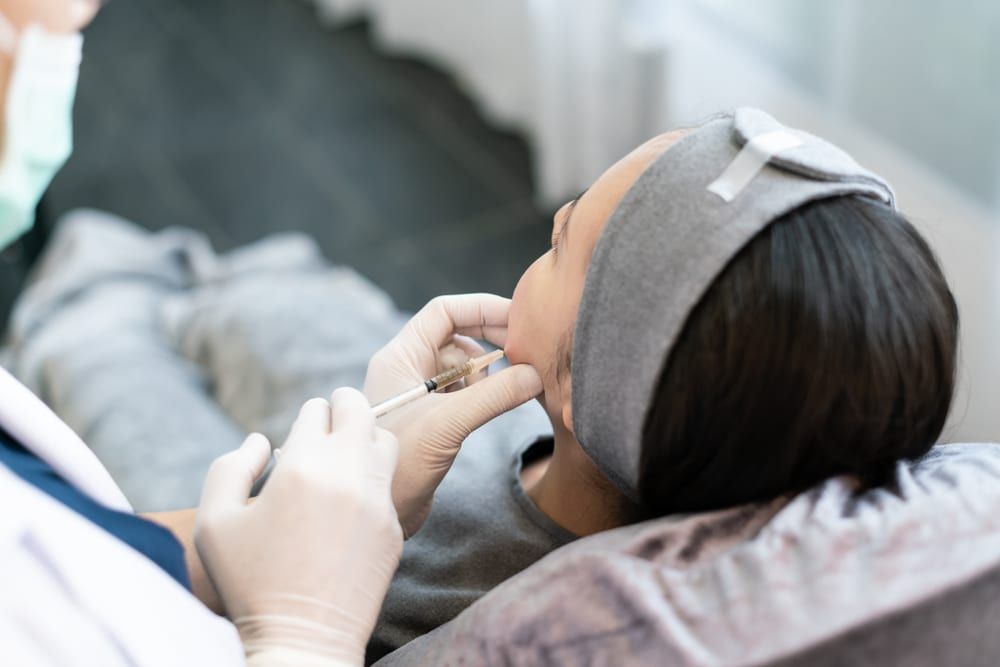What exactly is Botox for medical uses?
Botox has often been associated with cosmetic enhancement, as when its placed underneath the skin, it prevents the muscles from contracting and thus reduces the signs of wrinkles. Botox, however, has the power to improve your pain management significantly. Its ability to disrupt muscle contractions makes it an excellent form of therapy for patients with chronic migraines, cervical dystonia, spasticity, and other nerve-related conditions. Botox is used minimally due to its potent toxicity, but for many patients who handle nerve pain daily, Botox treatment can provide extensive relief in small doses.
How It Works With the Body
Botox is a medical substance created from the bacterium Clostridium botulinum toxin. This toxin by itself can create a life-threatening food poisoning called botulism; however, when purified of its bacterial substances, it creates a neurotoxin complex that’s injected in small doses into areas of the body to weaken the muscle contractions and block nerve signals. This substance relieves pain by preventing the chemical messenger called acetylcholine from attaching to the never endings that meet with the muscle cells. By blocking this chemical messenger, the toxin helps the body:
- Find relief from muscle contractions
- Prevent migraine headaches in between 4 to 15 days per month
- Stops neck, head, and eye spasms
- Relieves overactive bladders caused by neurological conditions
Indications for Medical Injection
Botox therapy can be used for a variety of neurological conditions in adults and children. The FDA has approved the use of Botox for the following:
- Urinary incontinence due to detrusor overactivity
- Adult patients with chronic migraines
- Upper limb spasticity in adult patients
- Cervical dystonia in adult patients
- Severe axillary hyperhidrosis
- Blepharospasm associated with dystonia
- Strabismus

For the approval of Botox treatment, please check with your insurance company to verify that Botox can be treated for your specific neurological condition.
What is the process at Premier Neurology Center?
Facts vs. Myths
At Premier Neurology Center, our Botox injections are administered by our neurologists Dr. Kashouty and Dr. Yono. During your appointment, the areas to be injected will be marked and cleaned, with an anesthetic spray application to numb the skin. The injection will be mixed with saline and then injected into the site at the targeted muscle. The number of Botox injections will vary based on neurological condition, and ultrasound-guided or EMG-guided techniques may be used to improve the procedure’s accuracy and avoid damage to the surrounding areas.
Despite many misconceptions, Botox offers pain relief for extended periods that aren’t always provided with topical and oral medications. Botox is:
- Asafe, effective drug that’s regulated by the FDA
- A painless procedure that only has mild discomfort.
- Are not an addictive substance and has how psychoactive ingredients
- Does not provide permanent pain relief
- Provides gradual pain relief
- Isn’t just a cosmetic procedure

As a medical treatment, patients who receive Botox injections will see the benefits of the treatment within 4 to 7 days, and the positive effects of Botox injections can last up to 3 to 4 months. The procedure can take 15 to 20 minutes, and normal activities can be resumed afterward.
How do I prepare for my appointment?
When you contact our office, our neurologists will be able to properly assess your condition, pain levels, and prescribe the best treatments available. Our board-certified physicians will provide you with preparation instructions for your first and continued Botox treatments and advise you on any symptoms that may occur after the injections. Our center is located at 1050 SE Monterey Rd, Suite 201, Stuart, FL 34994. For the best in medical care, please contact us to receive pain relief with Botox injections.




